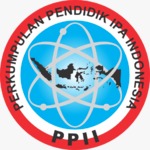Aplikasi Metode Seismik Refraksi dalam Menentukan Lapisan dan Tingkat Kekerasan Batuan di Bawah Permukaan Desa Medana Lombok Utara
DOI:
https://doi.org/10.29408/kpj.v4i2.2607Keywords:
Refraction Seismic, Subsurface, GeophoneAbstract
The seismic refraction method is one of the geophysical methods which is based on measuring the response of seismic waves in the soil that are fractured along the soil and rock layers. One of the applications of the seismic refraction method is to determine the layers and rock types below the surface. This study uses a geophone as a catcher for seismic waves that are emitted below the surface. The waves caught on the geophone are converted into seismic data which can be read in a seismograph. Seismic data read by seismographs are already in digital form and stored in the main unit PASI 16S24-P. The results of the data analysis concluded that below the land surface of the village of Medana, there were 3 rock layers with a thickness of the first layer 3-4 meters, the second layer 2-5 meters and the third layer 10-17 meters. The first and second layers are still in the form of soil (less compact), while the third layer is in the form of rock (compact). The level of hardness (density) will be more compact in linear to the depth, the more the depth will be the more compact the rock. The depth that is in the form of hard rock starts from 16 meters to 23 meters from the ground level of the village of Medana, Central Lombok.DOI: 10.29408/kpj.v4i2.2607
References
Atmajaya. (2008). Investigasi Sub-Permukaan Tanah untuk Perencanaan Jalan Menggunakan Survei Pembiasan Seismik. Yogyakarta : Universitas Muhammadyah Yogyakarta.
Bulqis K., Teti Z., (2008). Aplikasi Metode Geolistrik Tahanan Jenis Konfigurasi Wenner-Schlumberger untuk Survey Pipa Bawah Permukaan. Jurnal Teknik Elektro Universitas Mataram, 7(2), 84-91.
Gardner, G.H.F., Garder, L.W., and Gregory, A.R. (1974). Formation Velocity and Density the Diagnostic Basic for Stratigraphic Traps. Jurnal Geophysics, 39(1), 770-780.
Lubis, A.M. (2005). Analisis Kecepatan Gelombang Seismik Bawah Permukaan di Daerah yang Terkena Dampak Gempa Bumi 4 Juni 2000 (Studi Kasus : Kampus Universitas Bengkulu). Jurnal Gradien, 1(2), 69-73.
Nakif, N., Darsono, Sorja K., (2013). Penentuan Tingkat Kekerasan Batuan Menggunakan Metode Seismik Refraksi di Jatikuwung Karang Anyar. Indonesian Journal of Applied Physics, 3(1), 29-35.
Nurdiyanto, B. (2011). Penentuan Tingkat Kekerasan Batuan Menggunakan Metode Seismik Refraksi. Jurnal Meteorologi dan Geofisika, 12(3), 211-220.
Susilawati. (2004). Seismik Refraksi (dasar teori dan akuisisi data). USU Digital Library.
Sismanto. (1999). Eksplorasi dengan Menggunakan Seismik Refraksi. Yogyakarta: Gadjah Mada University Press.
Telford, W.M., Geldart, L.P. Sheriff, R.E. (1990). Applied Geophysic (Vol.1). Cambridge University Press.
Zulhelmi, Rustan E., Abdullah. (2018). Penentuan Kerapatan Batuan Menggunakan Metode Seismik Refraksi di Desa Dalaka Kecamatan Sindue Kabupaten Donggala. Jurnal Universitas Tadulako, 17(1), 57-64.








